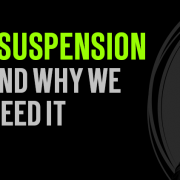Economic Suspension: What It Is and Why We Urgently Need It
It was only a month ago when Scott Morrison boasted about his plans to watch his beloved Sharks team play in the NRL. Since then, the country has been whammied with an unprecedented social lockdown. The result has been an economic catastrophe, with scenes of the great depression in colour as thousands joined queues outside Centrelink offices across the country.
In response to the crisis, Treasurer Josh Frydenberg advocated ‘cryogenic suspension’ as the solution, suggesting drastic and unprecedented planning was underway. The term cryogenic suspension was quickly replaced with ‘hibernation’, maybe because it sounded more friendly and less panicked. But perhaps more likely because it became clear that the government didn’t have the power to completely freeze everything.
What the government actually did was inject liquidity into the market, offering tax incentives, one-off payments, and subsidizing wages for jobs that were rapidly disappearing. These broad-based economic stimuli are like a turbo-version of the usual fiscal measures taken by governments during deep recessions. They’re designed to get consumers shopping again, thereby getting more money to businesses, and therefore more jobs to pick the economy up again.
But here’s the problem: This isn’t a normal recession. Normal recessions are caused by consumers losing confidence: Consumers spend less, buy cheaper options, and defer purchases to the last minute because they’re worried about the future. This time around consumers didn’t stop buying because they were doubtful about their future, they stopped buying because they were forced to stop.
Broad based stimulus packages to entice consumers to start shopping again won’t be as affective in today’s situation, because it’s not that consumers don’t want to go shopping, it’s that they can’t go shopping. Recent data from trend analysists Glimpse is consistent with the types of things you’d expect people to buy in a lockdown – home fitness equipment, bread makers, and external monitors for their laptops. That’s about the extent of it – things like holidays, cars, and even buying new outfits are either impossible or suddenly unnecessary, even if consumers had the money for it.
The current situation is not an economic slowdown – it’s a cultural and economic catastrophe that requires disaster relief measures that have never been tried before. The government is suffering a double whammy – on the one hand they need to salvage as much of the economy as possible, and on the other they have an expensive and resource intensive health issue to deal with. It’s starting to look increasingly uncertain they can adequately deal with both problems at the same time, especially if this drags on.
The bailouts we were given might look like they benefit consumers, but the reality is they are designed to prop up businesses, with the hope that when the health crisis is resolved the economy can be revved up again. But it’s a weak solution – citizens are losing their jobs en masse, fearful about keeping their homes, and dipping into their superannuation funds to pay bills they can no longer afford. The government can’t rely on consumer spending to soften the blow. Giving handouts to businesses so they don’t fire anyone is almost pointless if there are no customers for them to serve.
Josh Frydenberg actually had it right the first time – the correct solution is to completely freeze everything, or as he called it: cryogenic suspension. For literal preciseness, I call it complete economic suspension.
A complete economic suspension would mean immediately freezing all rents, loans, taxes, mortgages, and supplier invoices for a fixed period, likely several months. During this time, businesses and individuals do not need to pay any bills, and no interest is charged. Essentially the government freezes all economic activity, except for those activities necessary for survival. The government subsidizes basic needs including food and medical expenses, like they are doing now. But nothing else.
At the end of the hibernation, on a set date after the health crisis is contained, the economy is turned on. People go back to their jobs and start paying their bills again.
With a complete economic suspension, the government does not need to entice consumers to start shopping again using traditional stimulus measures. Critically, the freeze gives those who have lost their jobs and those businesses under threat valuable time needed to reorganise, reskill, and pivot. The world not only needs help to survive, it also needs time to adjust.
The alternative to not suspending the economy is grim. Likely the government will be forced to implement further fiscal stimulus packages, raising more debt and widening the poverty gap. Jobless rates will steadily rise as the inevitability of business closures accelerates over time.
It will be some time before Scott Morrison can ever boast again about his beloved Sharks. The real problem is not when things will get better, but how long it will take.
The former Prime Minister Bob Hawke, following Australia’s victory in the 1983 America’s Cup, famously said: “Any boss who sacks anyone for not turning up today is a bum.” The cheerfulness of his threat is unfortunately prophetic to what is desperately needed now for us to get through this. The government needs to suspend the economy now, before it’s too late.

